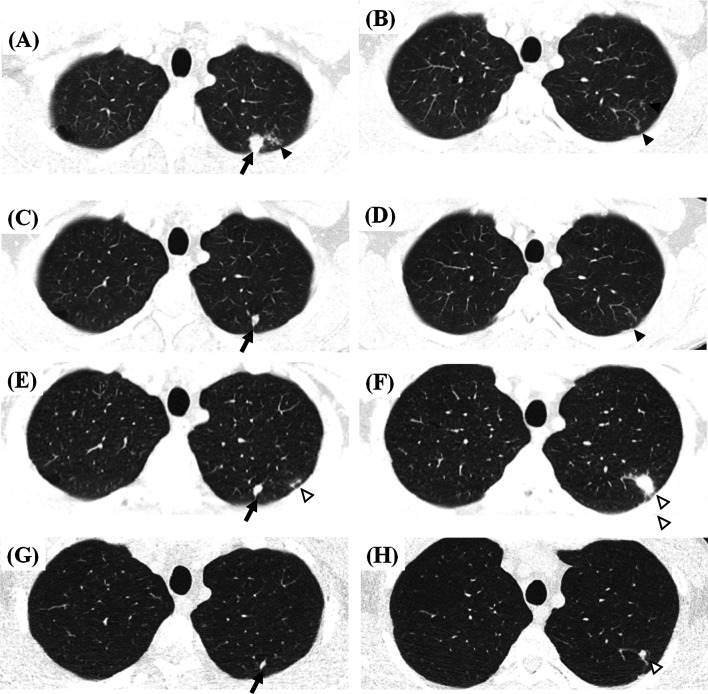Fig. 1.
Representative CT images showing dynamics of recent tuberculosis infection in a 33-year-old male contact of a patient with infectious multi-drug resistant tuberculosis. a, b Baseline CT images show a nodular consolidation (black arrow) and micronodules (black arrowhead) in two secondary pulmonary lobules in the apicoposterior segment of the left upper lobe (a). Another minimal pauci-nodular infiltration is noted in the adjacent subsegmental lobules (black arrowhead) (b). Bacteriologic/molecular tests of bronchoscopic alveolar lavage fluid were negative. The patient was observed without treatment. c, d Decreases in the previous pauci-nodular infiltrations are shown on follow-up CT images 14 months after the baseline CT examination. Sputum smear and culture were negative. e, f Eighteen-month follow-up CT images show new nodular consolidation and adjacent pauci-nodular infiltrations (white arrowheads) from one of the shrunken nodules (e, f), while another nodule remains stable (black arrow) (e; variable changes among lesions within a host). The close contact denied any symptoms and signs. Bacteriologic/molecular tests of bronchoscopic alveolar lavage fluid were negative. However, radiologic progression was regarded as indicating active tuberculosis, leading to the subsequent initiation of anti-multidrug resistant tuberculosis treatment. g, h Follow-up CT images 5 months after treatment show decreases in the previous nodular lesions with a few residual small nodules (black arrow and white arrowhead)

